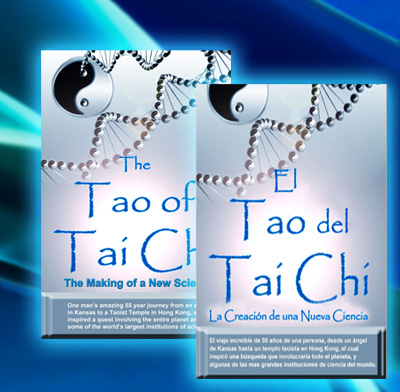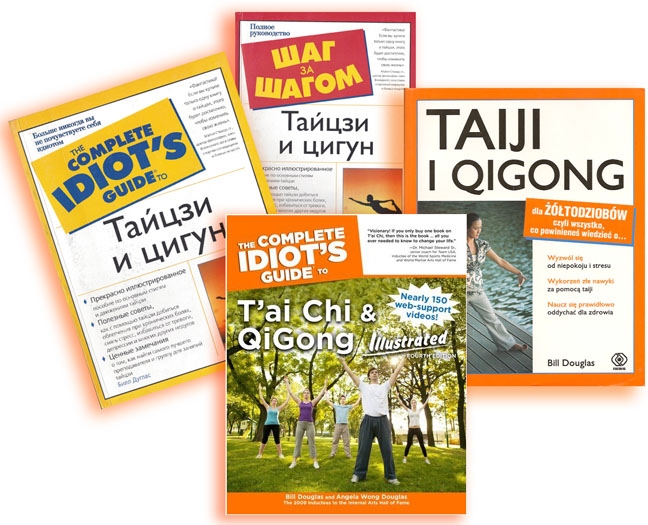coPD / LUNG DISEASE and Tai Chi &
qigong
SCROLL DOWN FOR YOGA, MEDITATION, MINDFULNESS
COPD: Tai chi a 'viable
alternative' to standard treatment
A new study
published in the journal Chest has revealed that the ancient
martial art is just as effective as pulmonary rehabilitation
for treating chronic obstructive pulmonary disease.
--
MEDICAL NEWS TODAY
The therapeutic effects of
qigong in patients with chronic obstructive pulmonary disease
in the stable stage: a meta-analysis
Conclusions
In this meta-analysis of RCTs between ten included studies, we
found that Qigong can improve COPD patients in lung function,
exercise capacity and quality of life who were in the stable
stage.
-- BMC - Complimentary Medicine and Therapies
Practicing Tai Chi helps improve respiratory function in
patients with COPD
Tai Chi offers a low-cost, easily
accessible alternative to pulmonary rehabilitation, study
finds
Currently, pulmonary rehabilitation (PR) is
used where available to improve exercise capacity and quality
of life, but the treatment requires access to trained staff
and specialized facilities. A new study looked at Tai Chi as a
lower cost, more easily accessed treatment option.
Investigators found that this slow, methodical form of
exercise is equivalent to PR for improving respiratory
function in patients with COPD.
-- SCIENCE DAILY
Therapeutic Effects of Qigong
in Patients with COPD: A Randomized Controlled Trial
Conclusion
This study solidifies the concept that
both HQG [Health Qigong] and PR [Puliminary Rehabilitation]
produce positive effects on subjective symptoms and functions
among COPD patients, and also provided evidence that HQG can
induce additional effects compared to conventional PR.
-- Science Direct
(Hong Kong Journal of Occupational Therapy)
Effects of the tai chi qigong programme on
functional capacity, and lung function in chronic obstructive
pulmonary disease patients: A ramdomised controlled trial
Conclusion:
In conclusion, this study demonstrated
that combined center and home-based TCQ training improves
functional capacity, dyspnea score, the quality of life of
individuals with mild to moderate COPD. Furthermore, TCQ is
safe and feasible for mild to moderate COPD patients to
practice at home.
-- SCIENCE DIRECT
For people with chronic lung
problems, such as COPD and pulmonary fibrosis, practicing Tai
Chi has been shown to improve the six-minute walking
test, improve overall quality of life and decrease feelings of
breathlessness.
-- LUNG INSTITUTE
Tai Chi Exercise for Patients
With Chronic Obstructive Pulmonary Disease: A Pilot Study
RESULTS
The patients were willing to be
randomized. Among 4 of the 5 patients in the intervention
group, adherence to the study protocol was excellent. The
cohort’s baseline mean ± SD age, percent-of-predicted FEV1,
and ratio of FEV1 to forced vital capacity were 66 ± 6 y, 50 ±
12%, and 0.63 ± 0.14, respectively. At 12 weeks there was
significant improvement in Chronic Respiratory Questionnaire
score among the tai chi participants (1.4 ± 1.1), compared to
the usual-care group (−0.1 ± 0.4) (P = .03). There were
nonsignificant trends toward improvement in 6-min walk
distance (55 ± 47 vs –13 ± 64 m, P = .09), Center for
Epidemiologic Studies Depression Scale (−9.0 ± 9.1 vs −2.8 ±
4.3, P = .20), and University of California, San Diego
Shortness of Breath score (−7.8 ± 3.5 vs −1.2 ± 11, P = .40).
There were no significant changes in either group’s peak
oxygen uptake.
-- NIH (National Institutes of Health)
Tai
chi: Promising for COPD
Studies suggest that tai
chi can help people with COPD boost their ability to walk and
do other types of exercise, as well as improve their quality
of life. The benefits are thought to arise from the
combination of movement, breathing, and relaxation.
-- HARVARD HEALTH PUBLISHING
Tai Chi Treats Lung Disease COPD - Says Australia Lung
Foundation.
Evidence-Based Tai Chi Treatment
Australian
Aging Agenda, 8/16/2012
A new study from the
University of Sydney, hailed as one of the most comprehensive
and conclusive studies of its kind, suggests that Sun-style of
Tai Chi is not only a valid but an incredibly effective form
of exercise therapy for people with COPD, which improves a
person's capacity to improve exercise capacity and quality of
life.
Recently published in the European Respiratory
Journal, the research has also found that the more gentle
brand of Tai Chi may be as beneficial as the traditional
exercise of standard pulmonary rehabilitation. . . .
According to Australian Lung Foundation figures, the treatment
could help an overwhelming percentage of people with COPD, as
only about one per cent of the population with the disease
currently have access to pulmonary rehabilitation.
-- Australian Aging Agenda, August 16, 2012
-- Shanghai
Daily, 8/15/2012
Harvard
Health Publication on Tai Chi for COPD
COPD.
Conventional pulmonary rehab. programs focus on aerobic
exercise and strength training to improve exercise capacity,
quality of life, and symptoms in patients with COPD. Tai Chi
extends the breathing techniques taught in pulmonary rehab. by
integrating novel elements, such as progressive relaxation,
imagery/visualization, mindfulness of breathing and overall
body sensations, postural training, and coordinated patterns
of breathing and movement. These additional therapeutic
elements make Tai Chi an effective adjunct to conventional
rehabilitation.
Studies: A Harvard study showed that
after 12 weeks the Tai Chi group felt significant improvement
in chronic respiratory symptoms compared to the usual COPD
care group. The Tai Chi group also had slight improvements in
their six-minute walking distance, depression, and shortness
of breath. Harvard is following up with a larger NIH funded
study to compare a Tai Chi group to other meditative
techniques, as well as to a non-exercise education program.
A larger Hong Kong study found a Tai Chi Qigong group
improved key measures of respiratory function and participated
in higher levels of activity when compared to a walking plus
breathing exercise or usual care group. The Tai Chi group also
reported greater improvements in respiratory health-related
quality of life.
Research shows that Tai Chi-like
exercises, including Qigong, may help sustain the gains COPD
patients make after completing pulmonary rehabilitation, which
often is lost after about six months. (Harvard Medical School
Guide to Tai Chi, pages 176 to 178.)
Read more at Harvard Health Publications ...
FIND MUCH MORE RESEARCH AT THE "QIGONG INSTITUTE DATABASE"/strong>
Since 1984, collecting breaking medical/science research on
Qigong, Tai Chi, Yoga, and Mind-Body Education
Click here
for Qigong Institute Database...
YOGA and COPD / LUNG DISEASE
Study of the effect of yoga training on diffusion capacity in
chronic obstructive pulmonary disease patients: A controlled
trial
The controlled breathing
in yoga can ease anxiety, achieve relaxation, and provide more
oxygen to the blood stream. The exercises help open blocked
airways caused by bronchitis or emphysema, which are linked to
COPD, and improve the function of air circulation. Simple yoga
moves can even aid those with advanced COPD.
-- NIH (National Institutes of Health)
Researchers study yoga as a form of pulmonary rehabilitation
for COPD
Scientists in India have studied the effects of
yoga as a form of pulmonary rehabilitation for chronic
obstructive pulmonary disease ...
The participants
were split into two groups – the first group was taught yoga
exercises, while the other group was put through a structured
pulmonary rehabilitation programme ...
the two groups
experienced similar improvements to their lung function and
exercise stamina after completing their respective courses.
Based on these findings, the researchers believe that yoga
could be used to help manage COPD.
-- EUROPEAN LUNG .org
MINDFULNESS / MEDITATION and COPD / LUNG DISEASE
Mindfulness for COPD
Mindfulness-based therapy, yoga and relaxation were all
included in the international GOLD COPD 2019 and 2020 clinical
guidelines. Mindfulness has been used to reduce anxiety and
depression, improve physical outcomes such as lung function,
shortness of breath, and fatigue in those with COPD and
psychological problems.
-- THORIACIC .org
* NOTE: World Tai Chi & Qigong Day advises
consulting your physician before beginning any new exercise,
herbal, diet, or health program. The research listed here is
meant to stimulate a discussion between you and your
physician, health insurance carrier, etc., not as medical
advise. Research and comments provided here are hoped to
stimulate a more robust discussion of powerful natural
mind/body health tools. Popular media, health media, and
government must increase attention to stunning emerging
research, including the UCLA study indicating Tai Chi
participants enjoyed a 50% increase in immune system
resistance to viral infection.
- To learn more about tai chi & qigong medical research,
see the below book,
"the complete idiot's guide to tai chi & qigong,", and also
"Harvard Medical School Guide to Tai Chi," and
"The way of qigong: the art and science of chinese energy healing."
Click to purchase this acclaimed best-selling Tai Chi book, with nearly 150 web-video support videos for the detailed text/illustration instruction as a "gift of health" for loved ones.
A new paradigm in multi-media educational books.
"Visionary! If you only buy one book on T'ai Chi, then this
is the book. This book is all you ever needed to know to
change your life. I have taught T'ai Chi for several decades
myself, yet I have now read Bill's book from cover to cover
seven times, and still get something new from it each time."
– Dr. Michael Steward Sr., D.MA, Ph.D., MA, Senior
Coach for Team USA, Inductee of the World Sports Medicine and
World Martial Arts Hall of Fame
"Sometimes Chinese
culture can be difficult to explain. Sifu Bill Douglas
successfully uses American culture to explain the art of T'ai
Chi Chuan. He simplifies difficult concepts, making them
easier to understand. This book takes the best parts of T'ai
Chi and makes them understandable [to Westerners] without
requiring a grounding in Chinese culture and history."
– Sifu Yijiao Hong, USA All-Tai Chi Grand Champion and USA
Team member; Certified International Coach and Judge,
International Wushu Federation
"Douglas has
achieved for QiGong what Apple did for the computer. He's
brought it to the people … great place to start for beginners.
… Teachers may also find this an excellent manual 'on how to
explain these concepts to the general public…'"
– R.
Poccia,
"The Tao of Tai Chi: The Making of a New Science" (now available in both English and Spanish))

Harvard's Dr. Peter Wayne discusses Tai Chi, Qigong and Bio-Energy with Neuro-biologist, Dr. Richard Hammerschlag,
with WORLD TAI CHI & QIGONG DAY ONLINE SUMMIT HOSTS
World Tai Chi & Qigong Day's series of Official ONLINE
SUMMITS, have brought some of the top minds in Tai Chi, Qigong,
and cutting edge scientists researching Mind-Body practices.
World Tai Chi & Qigong Day's global health education work was
recognized on page 25 of "The Harvard Medical School Guide to
Tai Chi" ...
A reflection of how successful the invasion
has been is World Tai Chi Day, organized by Bill Douglas. One of
the purposes of this day is ‘to bring together people across
racial, economic, religious, and geo-political boundaries, to
join together for the purpose of health and healing, providing
an example to the world.' Millions of people around the world –
65 nations participated in 2011 – gather one day each year to
celebrate the health and healing benefits of Tai Chi and Qigong.
— The Harvard Medical School Guide to Tai Chi (page 25)
Harvard Medical School Researchers Launch 'Tai Chi as Therapy' Lecture to Commemorate World Tai Chi Day
The new Harvard Medical School Guide to Tai Chi is a powerful
reference book for all tai chi and qigong advocates, teachers,
etc. The Harvard Guide cites WorldTaiChiDay.org's work in
expanding global awareness of tai chi and qigong!
Our
efforts have exposed over ONE BILLION potential viewers/readers
of mass media to Tai Chi and Qigong and its myriad health
benefits, via our annual WTCQD worldwide events.
